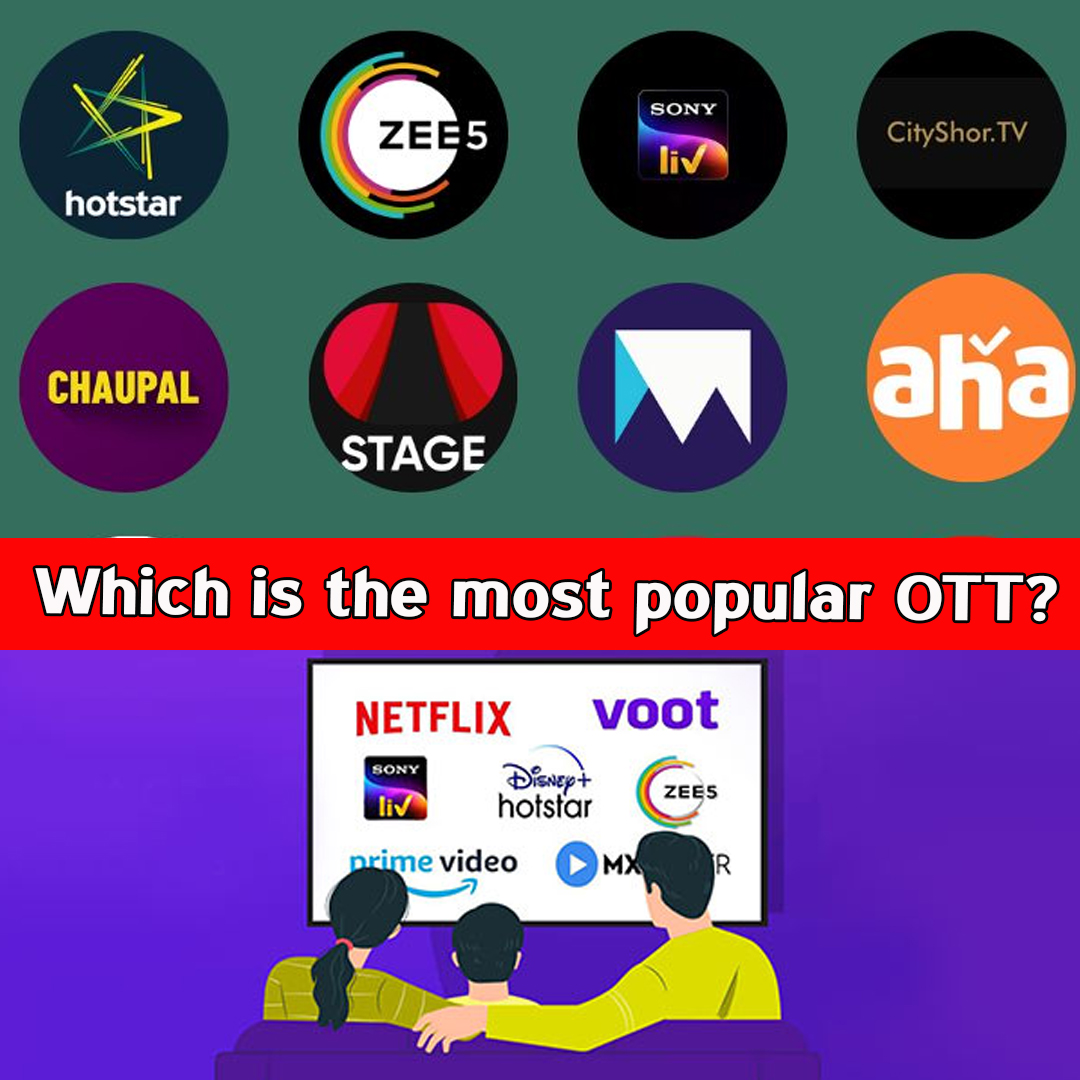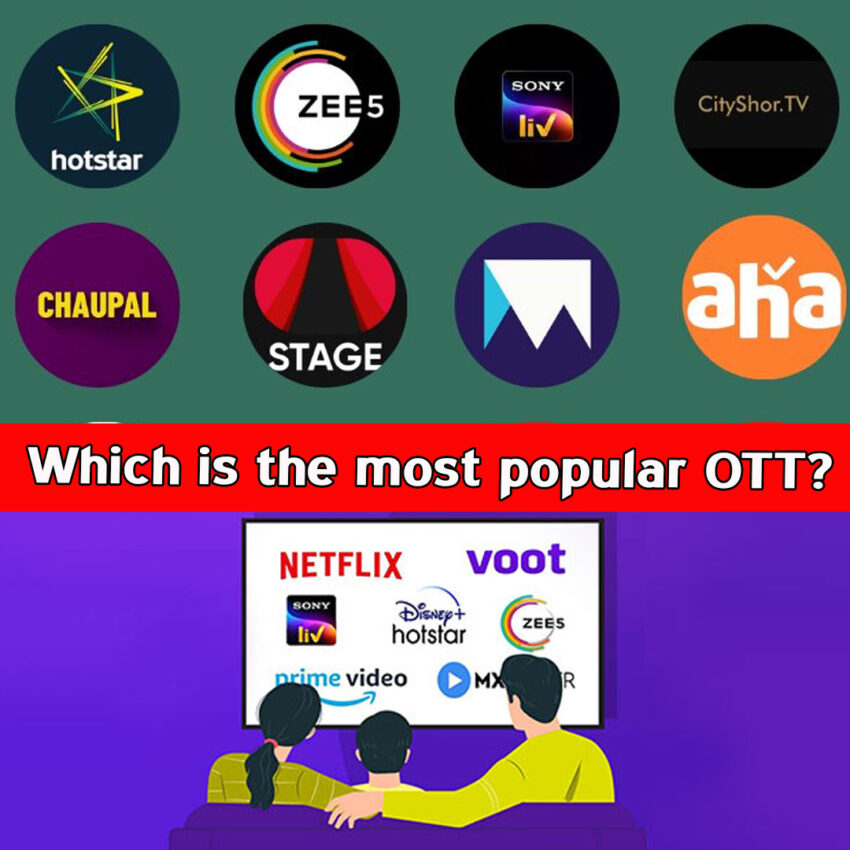Which is the Most Popular OTT?

Introduction
Over-the-top (OTT) streaming platforms have revolutionized how people consume entertainment. Gone are the days when audiences waited for television broadcasts or relied on DVDs. With OTT, viewers can access a massive library of movies, web series, live sports, documentaries, and more, anytime and anywhere, using smartphones, smart TVs, or laptops.
But in 2025, with dozens of major OTT services available, one question remains: Which is the most popular OTT platform in the world? This article explores the leading contenders, their subscriber counts, content strategies, regional dominance, and factors that make an OTT platform the most popular.
What Does “Most Popular” Mean in OTT?
Before naming a winner, it’s important to define what “most popular” entails. Popularity can be measured by:
- Total global subscribers
- Revenue generation
- Content variety and quality
- User engagement and viewing hours
- Geographical reach
An OTT platform may lead in one category but not others. For instance, some platforms dominate in certain regions, while others have massive global reach.
| Read more – How rich is Elon Musk? |
The Global OTT Market in 2025
The OTT industry has grown rapidly, with global revenue expected to surpass $500 billion by 2025. A surge in internet penetration, 5G adoption, and the demand for on-demand entertainment has fueled this expansion.
Major Players:
- Netflix
- Disney+ (Disney Plus)
- Amazon Prime Video
- HBO Max (now Max)
- Apple TV+
- Hulu
- Peacock
- Regional giants like Hotstar (India), iQIYI (China), and Viu (Southeast Asia).
Among these, a few consistently lead in terms of subscribers and brand recognition.
Netflix: The Global Leader
Subscriber Base
As of 2025, Netflix remains the most popular OTT platform in the world, boasting over 275 million subscribers across more than 190 countries.
Why Netflix Leads:
- Content Variety: Offers thousands of TV shows, movies, documentaries, anime, and Netflix Originals.
- Global Reach: Available in almost every country except a few (e.g., China, North Korea, Syria).
- User Experience: A user-friendly interface, advanced recommendation engine, and multi-device accessibility.
- Original Programming: Critically acclaimed hits like Stranger Things, The Witcher, Money Heist, and Wednesday.
- Investment in Content: Spending over $20 billion annually on content production and acquisition.
Engagement
Netflix reports billions of hours watched every month, with high user retention due to a constantly refreshing content library.
Disney+: A Strong Contender
Disney+ has grown at an unprecedented pace since its launch in 2019, amassing over 200 million subscribers by 2025.
Strengths:
- Exclusive Content: Houses Disney, Pixar, Marvel, Star Wars, and National Geographic titles.
- Family-Friendly Appeal: A massive hit among families with children.
- Bundling Strategy: Offers bundles with Hulu and ESPN+, enhancing its reach.
Disney+ dominates in markets like the United States, Western Europe, and parts of Asia.
Amazon Prime Video: The Versatile Challenger
Amazon Prime Video has more than 250 million subscribers, but it’s important to note that many subscribe as part of the Amazon Prime membership, which also offers free shipping and other perks.
Why It’s Popular:
- Value Addition: Prime Video comes bundled with shopping benefits.
- Diverse Content: Includes original series like The Boys, Reacher, and The Marvelous Mrs. Maisel, plus a large movie library.
- Global Reach: Available in over 240 countries, often at affordable prices.
Prime Video ranks high in popularity due to its integration with Amazon’s ecosystem.
Regional Leaders
Hotstar (India)
With its extensive cricket coverage, Bollywood movies, and Disney+ integration, Disney+ Hotstar commands a huge audience in India, one of the largest streaming markets.
iQIYI and Tencent Video (China)
These platforms dominate the Chinese OTT market, with tens of millions of subscribers each, though they remain largely inaccessible outside China.
Viu and WeTV
Popular in Southeast Asia and the Middle East, these platforms cater to niche audiences with regional and K-drama content.
Factors Driving OTT Popularity
- Content Library
- A wide variety of shows, films, and originals keeps users engaged.
- User Experience
- Intuitive apps, personalized recommendations, and multi-device streaming are critical.
- Affordability
- Flexible subscription plans, including ad-supported tiers, help attract more users.
- Regional Adaptation
- Platforms offering regional languages and culturally relevant content see higher growth.
- Exclusive Originals
- Exclusive, high-quality originals create brand loyalty and attract new subscribers.
OTT in Emerging Markets
Emerging economies like India, Africa, and Southeast Asia are fueling the next phase of OTT growth. Low-cost mobile data, 5G expansion, and localized content make these regions highly attractive to OTT giants.
Future of OTT: Trends to Watch
- Ad-Supported Plans
- Netflix and Disney+ have introduced cheaper ad-supported subscriptions, widening access.
- Sports Streaming
- Live sports, especially cricket and football, are a major driver of new subscriptions.
- AI-Powered Recommendations
- Advanced AI personalizes user experience, improving engagement.
- Hybrid Models
- Combining streaming with gaming, shopping, and social media is the next frontier.
- Content Globalization
- Non-English shows like Squid Game and Money Heist have proven that global hits can come from anywhere.
Conclusion: The Most Popular OTT in 2025
Considering subscriber count, global reach, engagement, and brand dominance, Netflix holds the crown as the most popular OTT platform in the world in 2025. With over 275 million subscribers, unmatched global availability, and a relentless focus on original and diverse content, Netflix continues to set the standard in the streaming industry.
However, Disney+ and Amazon Prime Video remain close contenders, and the race for OTT supremacy is far from over. As the market evolves with AI, sports streaming, and regional expansions, we may see a reshuffling of ranks in the years to come.

